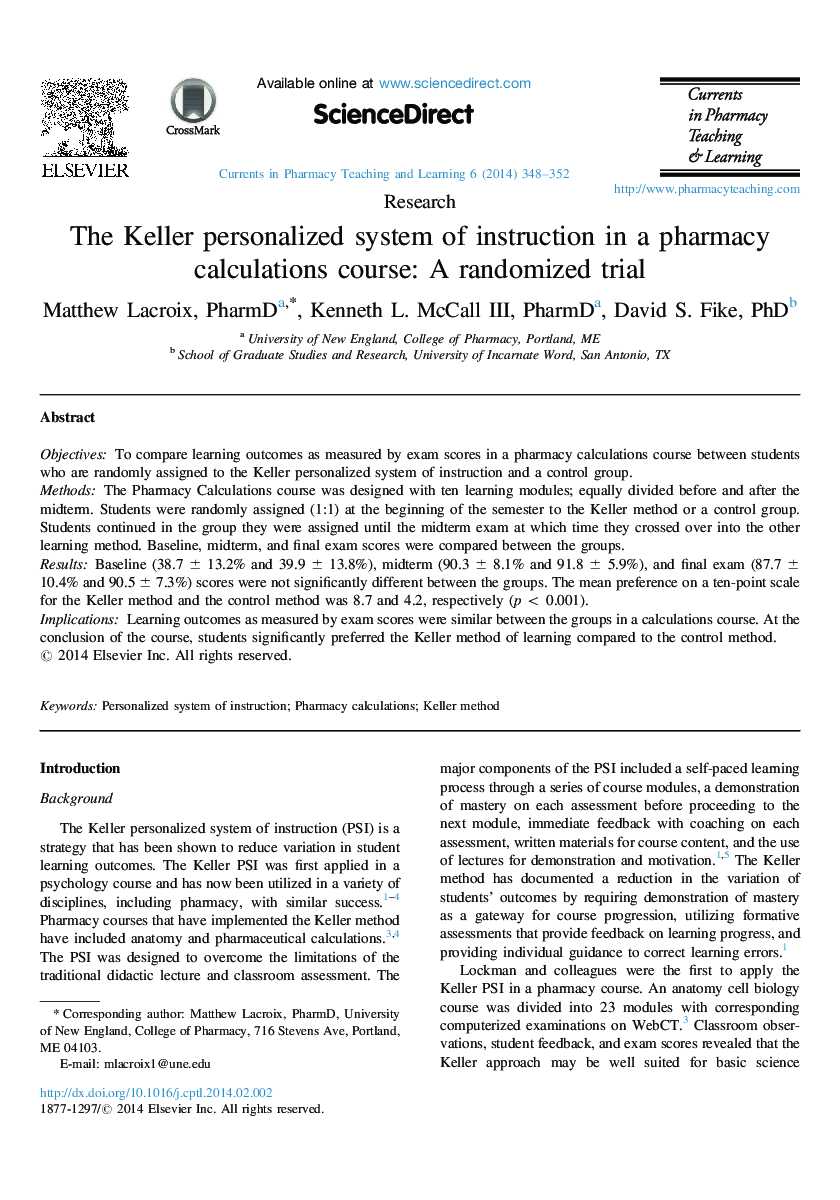| Article ID | Journal | Published Year | Pages | File Type |
|---|---|---|---|---|
| 353166 | Currents in Pharmacy Teaching and Learning | 2014 | 5 Pages |
ObjectivesTo compare learning outcomes as measured by exam scores in a pharmacy calculations course between students who are randomly assigned to the Keller personalized system of instruction and a control group.MethodsThe Pharmacy Calculations course was designed with ten learning modules; equally divided before and after the midterm. Students were randomly assigned (1:1) at the beginning of the semester to the Keller method or a control group. Students continued in the group they were assigned until the midterm exam at which time they crossed over into the other learning method. Baseline, midterm, and final exam scores were compared between the groups.ResultsBaseline (38.7 ± 13.2% and 39.9 ± 13.8%), midterm (90.3 ± 8.1% and 91.8 ± 5.9%), and final exam (87.7 ± 10.4% and 90.5 ± 7.3%) scores were not significantly different between the groups. The mean preference on a ten-point scale for the Keller method and the control method was 8.7 and 4.2, respectively (p < 0.001).ImplicationsLearning outcomes as measured by exam scores were similar between the groups in a calculations course. At the conclusion of the course, students significantly preferred the Keller method of learning compared to the control method.
